Homeowners Associations (HOAs) play an essential role in maintaining the quality and standard of communities. However, managing an HOA involves various challenges that can be daunting. This blog will explore common hurdles in HOA management and offer practical solutions to tackle them effectively.
1. Navigating Budget Constraints
One of the primary responsibilities of an HOA is managing finances. With limited funds, finding ways to allocate resources efficiently can be difficult. Create a detailed budget plan, focusing on necessities, and consider engaging a financial advisor for expert guidance.
It’s not just about cutting costs; strategic planning is essential. Consider setting long-term financial goals and investing in opportunities that promise high returns. Sometimes, it might be necessary to revisit annual assessments to ensure they are in line with the association’s needs. Involving residents in budget discussions can also foster transparency and generate fresh ideas for fundraising.
2. Ensuring Compliance with Regulations
HOAs must adhere to various state and local regulations, which can be confusing. Keeping up-to-date with legal changes and consulting with legal professionals can help ensure compliance and avoid legal issues.
An effective way to manage this is by maintaining a comprehensive record of all legal obligations and periodically reviewing them. Partner with legal firms or specialized advisors to navigate complex regulatory landscapes, which can be particularly challenging in states with evolving HOA laws. Keeping detailed documentation of meetings, decisions, and expenses is crucial and offers protection in potential litigation scenarios.
Education is also key. Hosting informational sessions on legal compliance for board members and residents can clarify expectations. This proactive approach can considerably reduce the risk of unintentional non-compliance and enhance the community’s overall governance framework.
3. Handling Communication Breakdowns
Effective communication between the board and residents is crucial. Implement regular newsletters and digital platforms to keep everyone informed, and encourage open dialogue at community meetings.
In the modern world, harnessing technology such as dedicated communication apps can streamline interactions and ensure messages are promptly delivered. Such platforms also facilitate instant feedback, allowing boards to react quickly to residents’ concerns. For more personal engagement, consider town hall meetings or “coffee hours,” where board members can interact informally with residents.
4. Conflict Resolution Among Neighbors
Disputes are inevitable in any community. Establishing a clear conflict resolution process and fostering a sense of community can help address disagreements constructively.
Consider dedicating a part of regular board meetings to open forums where residents can voice their concerns. Providing training for board members in mediation techniques can be invaluable in navigating disputes amicably. Encouraging neighbors to view conflicts through the lens of collaboration rather than competition facilitates creative problem solving that serves the entire community.
5. Maintaining Property Standards
To preserve property value, HOAs must enforce community standards. Regular inspections and a fair enforcement policy can motivate residents to comply with guidelines.
Incorporating technology into the inspection process, such as drone technology, can provide comprehensive overviews of properties, making inspections more efficient and thorough. Consistency is key to enforcement; consider developing a transparent penalty system with clear repercussions for non-compliance. Engaging residents in discussions about these standards and revisiting them periodically ensures they remain relevant and fair.
6. Managing Unexpected Repairs and Maintenance
Unexpected repairs can strain an HOA’s budget. Setting aside a reserve fund and scheduling regular maintenance can prevent minor issues from becoming major expenses.
Regularly updated reserve studies help HOAs accurately plan financial allocations for unforeseen situations. Consider implementing a tiered repair plan, which prepares the community for various levels of repair urgency, enabling a proactive response to maintenance needs. Leveraging technology for tracking maintenance records and histories helps streamline this process, ensuring nothing falls through the cracks.
7. Balancing Board Responsibilities
HOA board members often juggle multiple roles. Dividing tasks and responsibilities among board members can streamline operations and prevent burnout.
Developing a clear organizational chart that outlines roles and responsibilities ensures tasks are evenly distributed. Incorporating subcommittees dedicated to specific areas like finance, landscaping, or social events allows board members to focus on areas of expertise and interest. Establishing succession plans for key positions ensures continuity and stability within the board’s operations.
8. Enhancing Security Measures
Ensuring community safety is paramount. Installing security systems and organizing neighborhood watch programs can increase residents’ sense of security.
Implementing smart security solutions, such as AI-assisted surveillance can bolster community protection measures. These technologies offer real-time analysis and can integrate seamlessly with local law enforcement. Community workshops on personal safety and security awareness can further enhance residents’ understanding and participation in keeping the neighborhood safe.
9. Engaging Residents in Community Programs
Resident participation is vital for a vibrant community. Organize events and activities that encourage involvement and foster a sense of belonging among residents.
10. Adopting New Technology Solutions
Embracing technology can streamline processes. Implementing management software can improve efficiency in communication, maintenance tracking, and financial management.
Staying abreast of the latest property management technologies can provide significant advantages. Automated systems for billing, communication, and record-keeping minimize human error and increase efficiency. Transitioning to virtual meetings or incorporating mobile apps for resident engagement makes the community dynamic and responsive to change, ultimately enhancing overall satisfaction.





